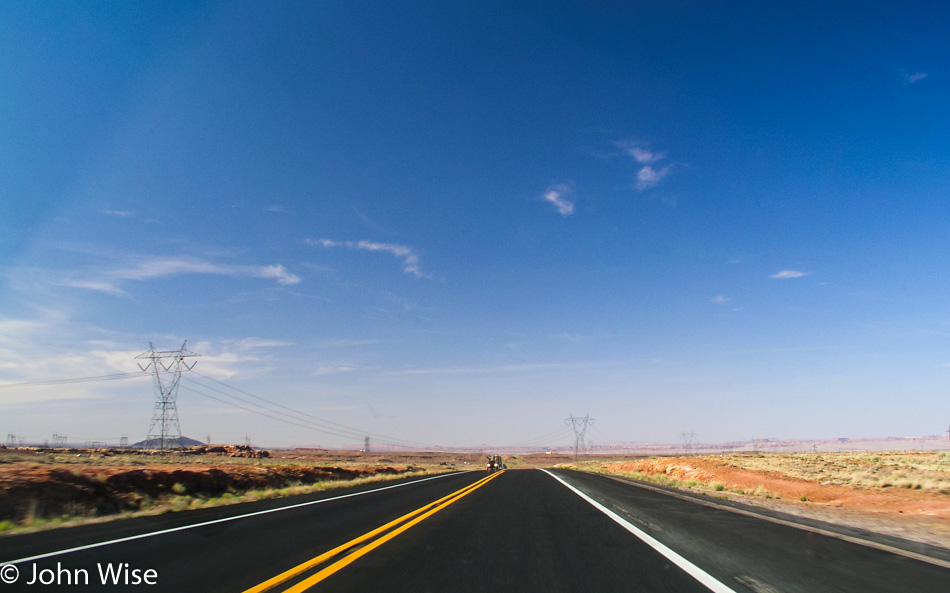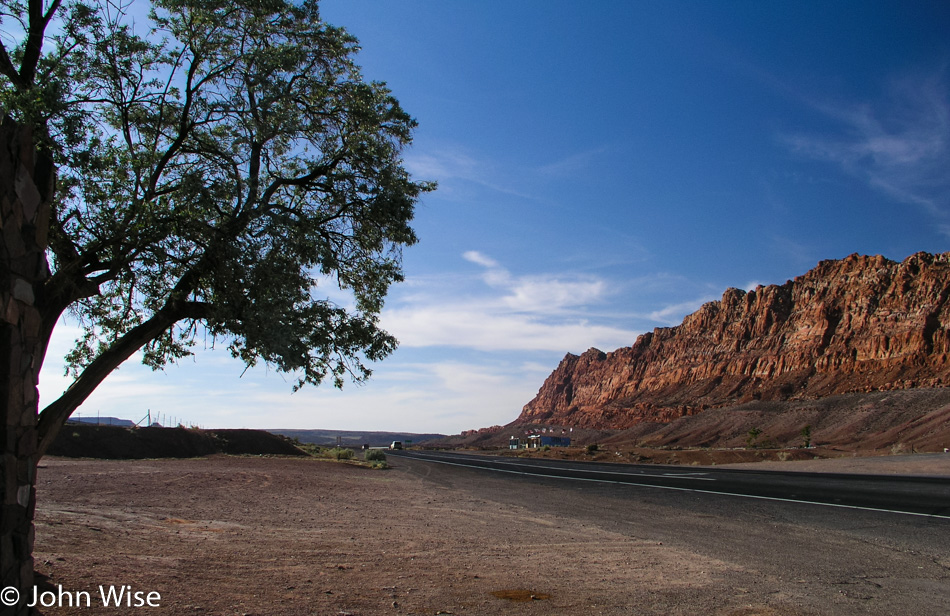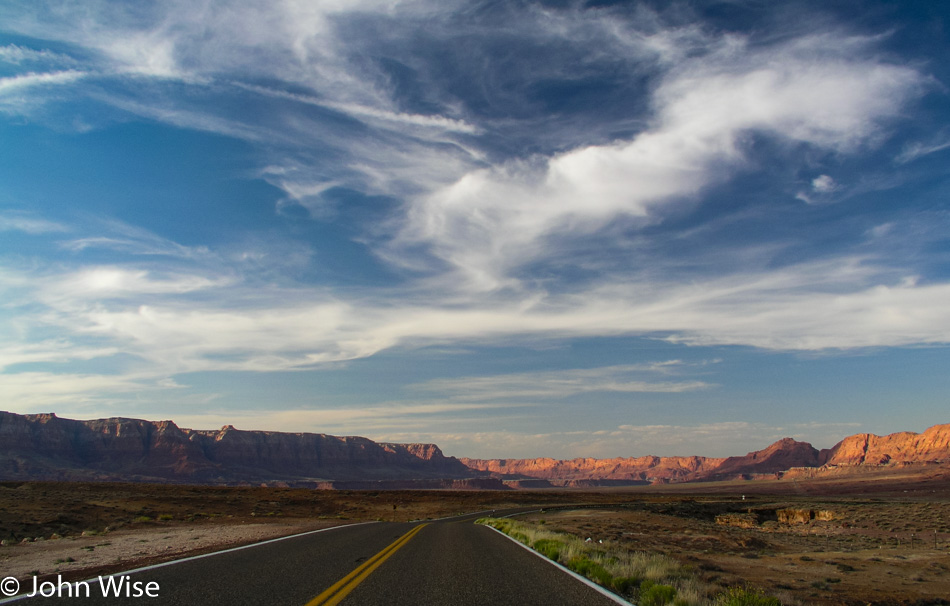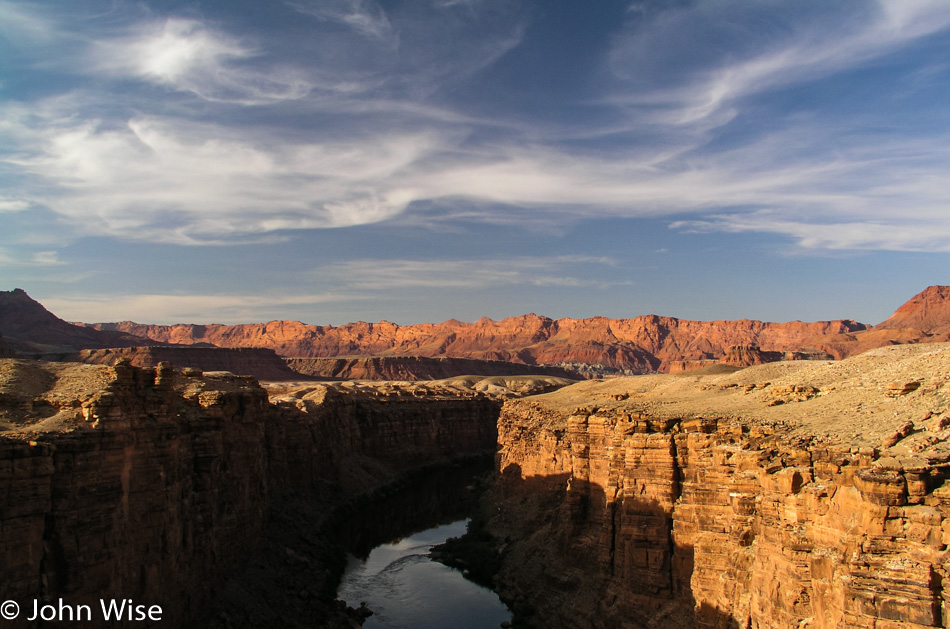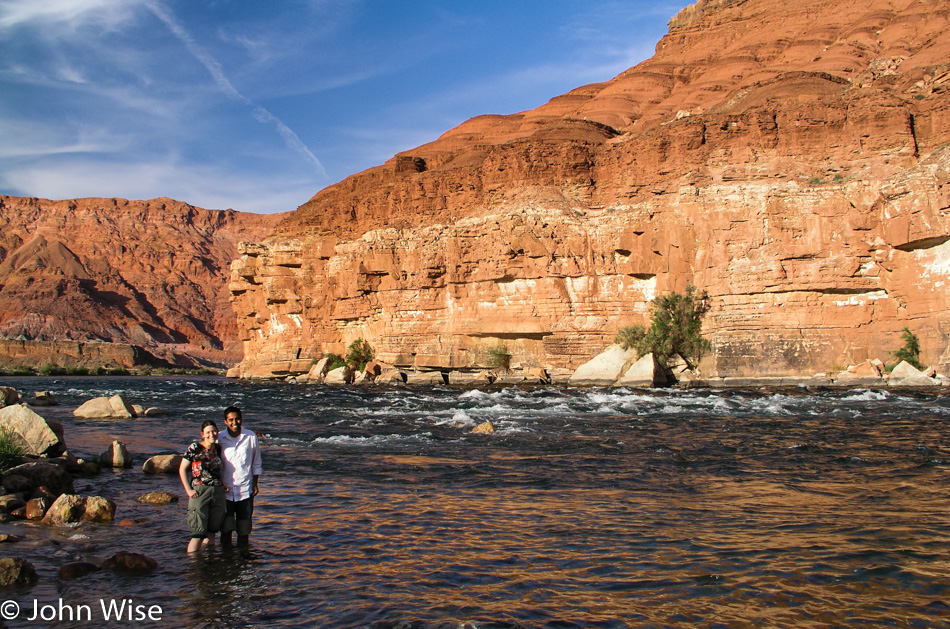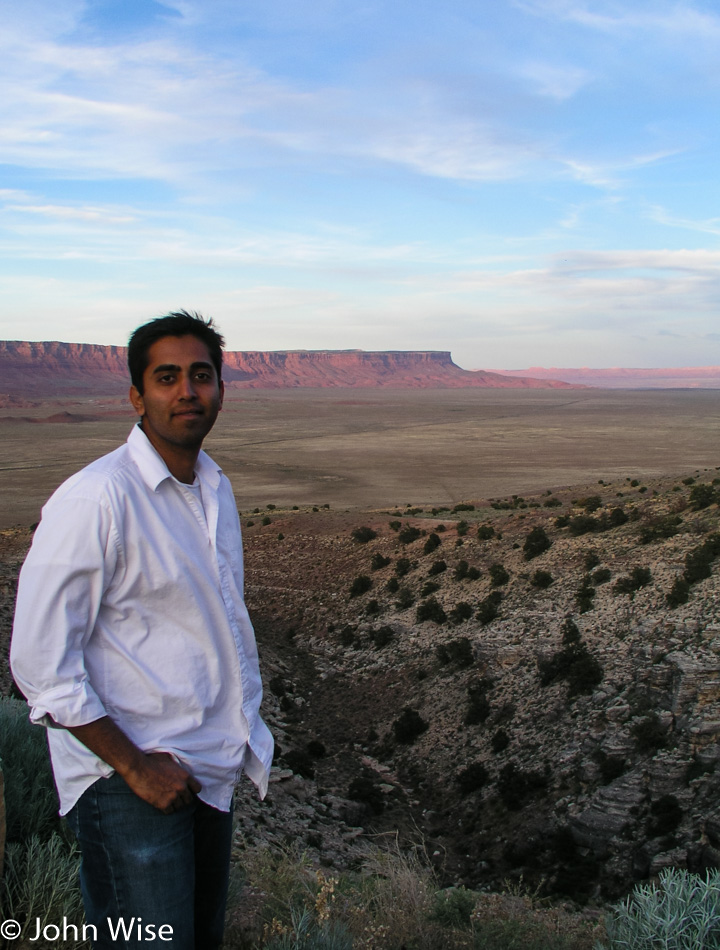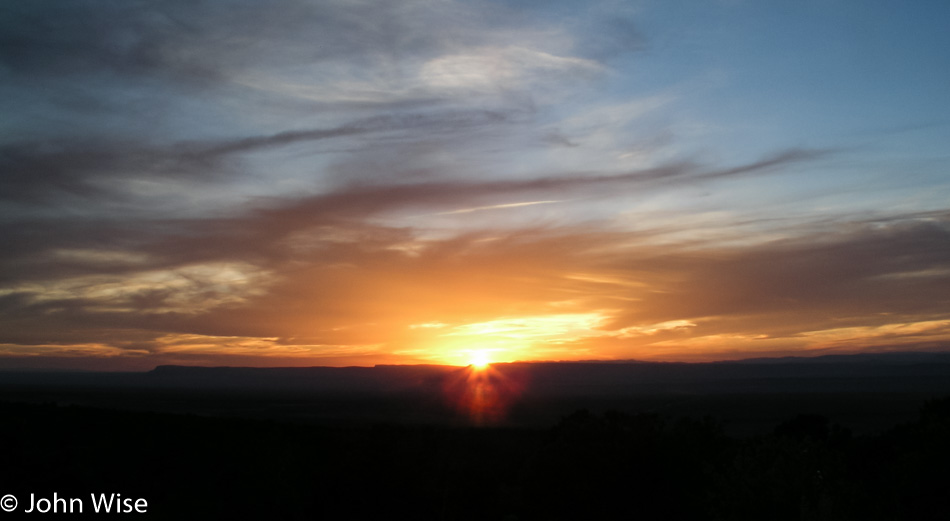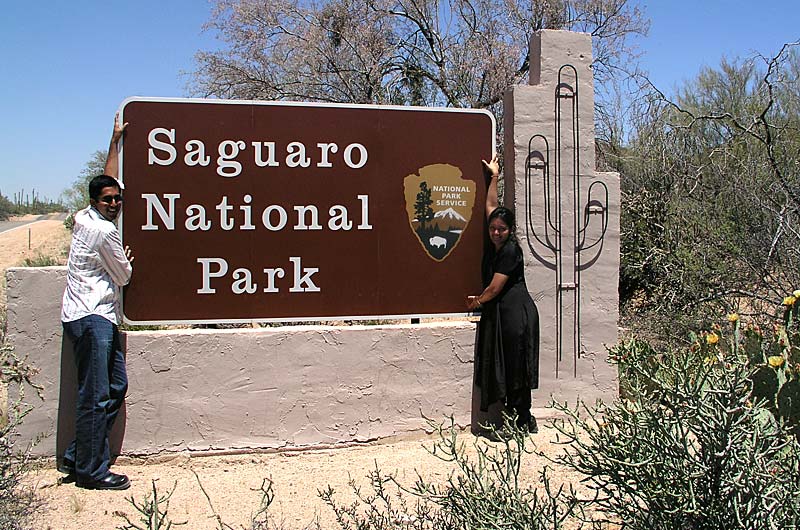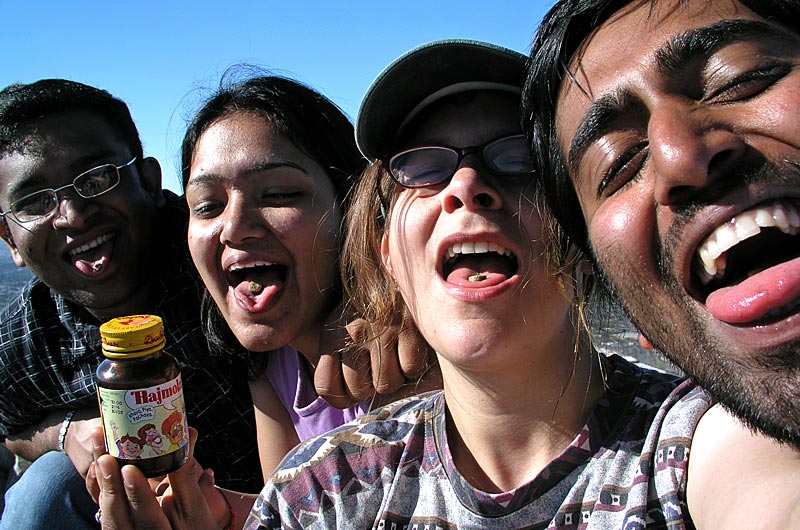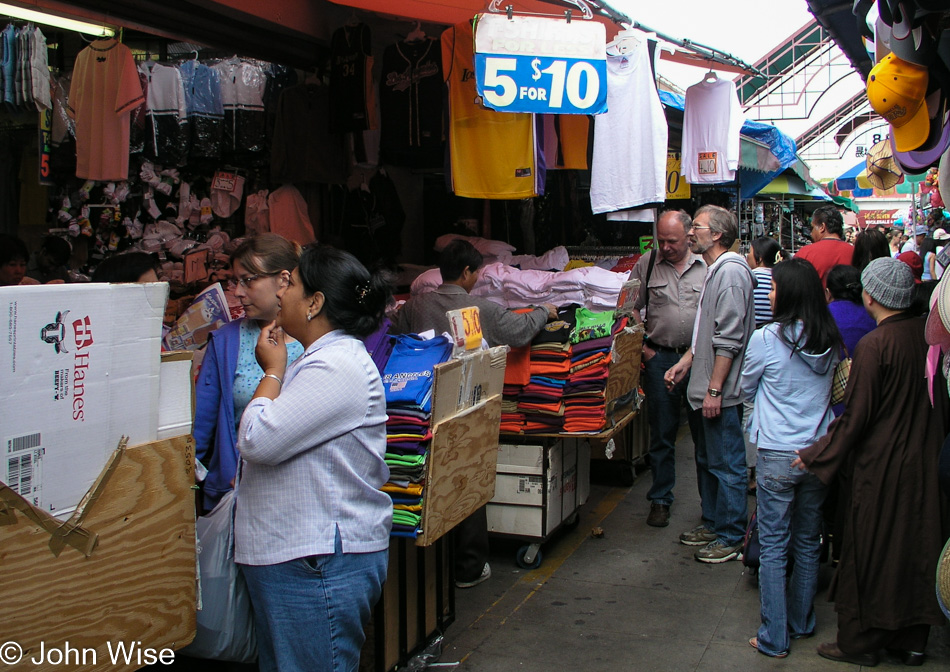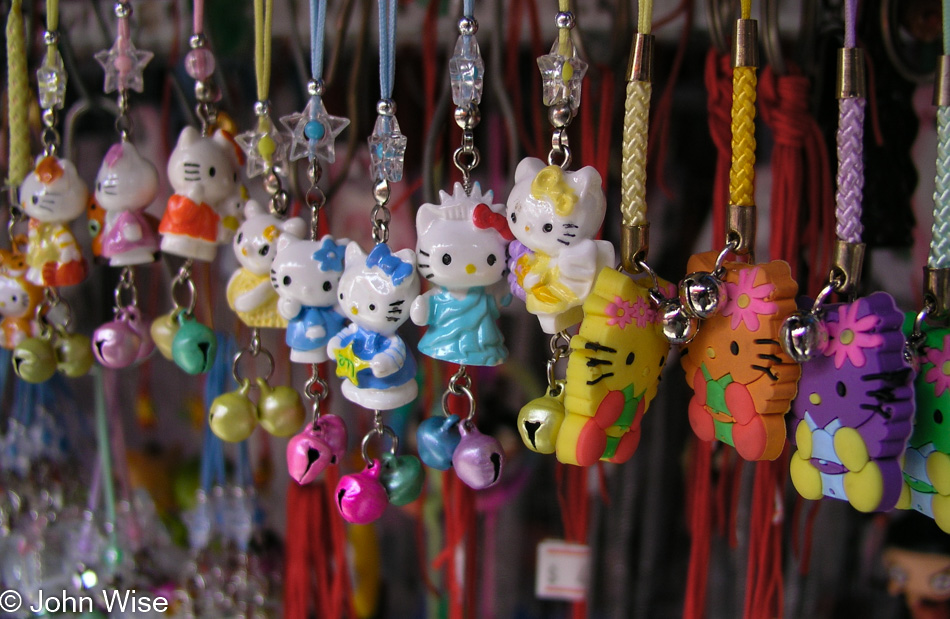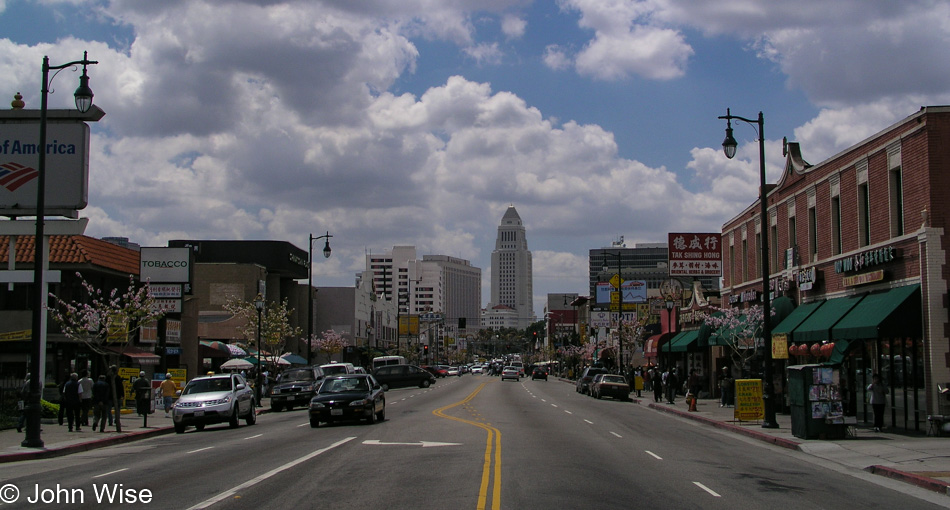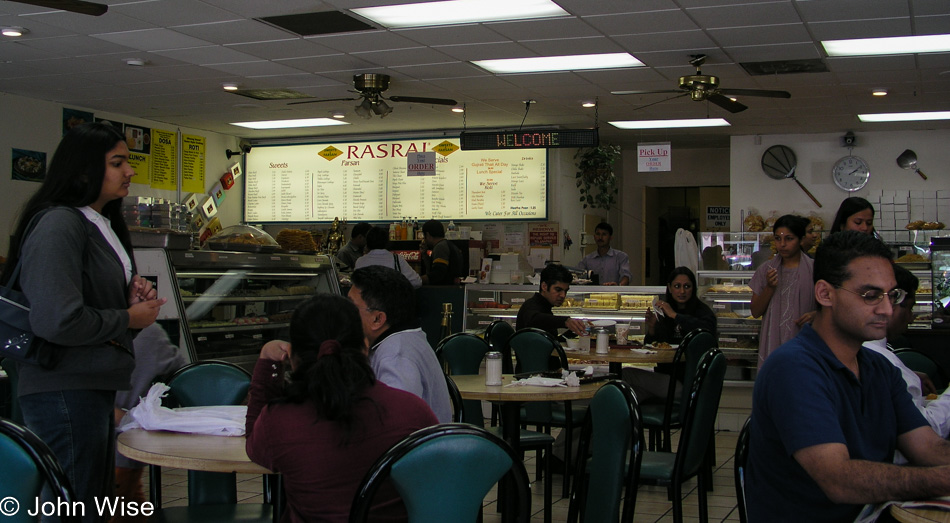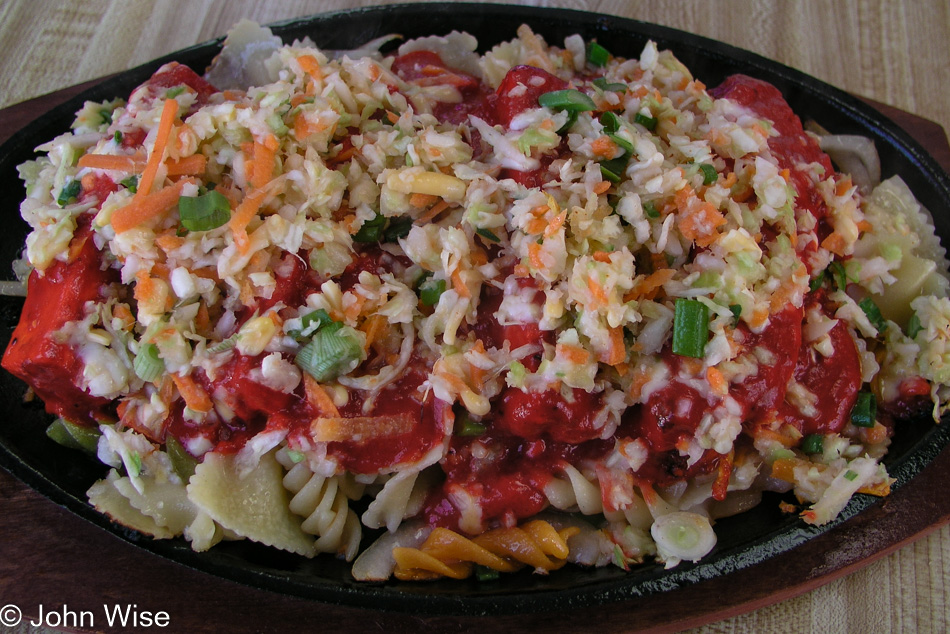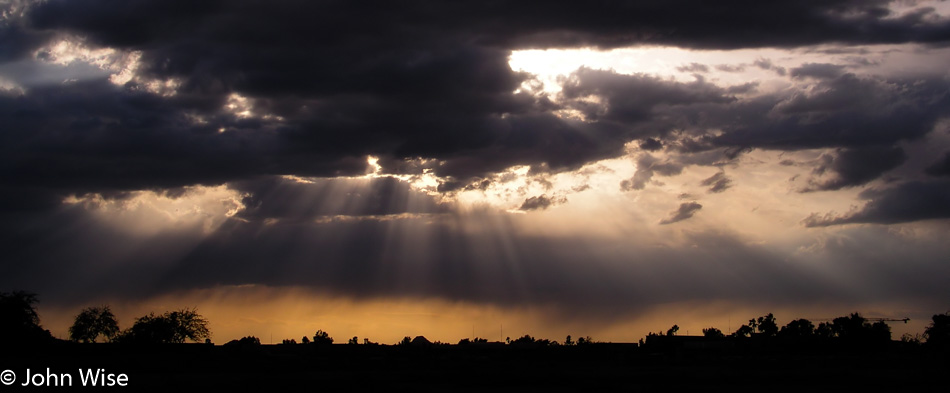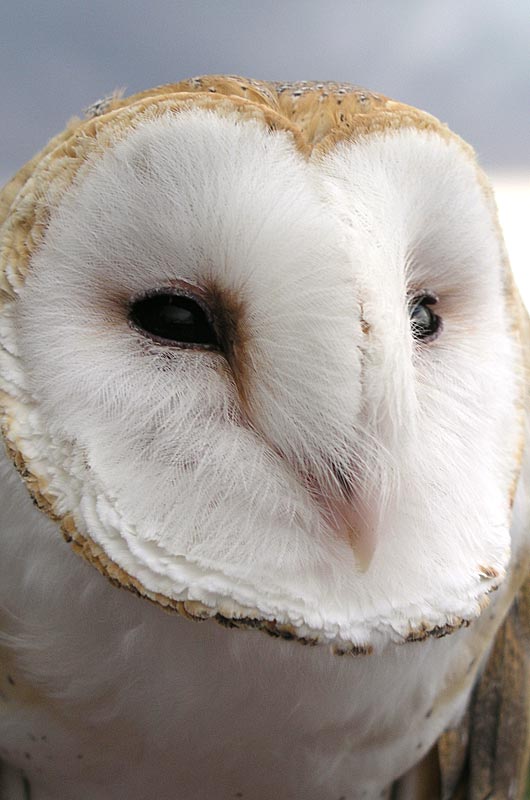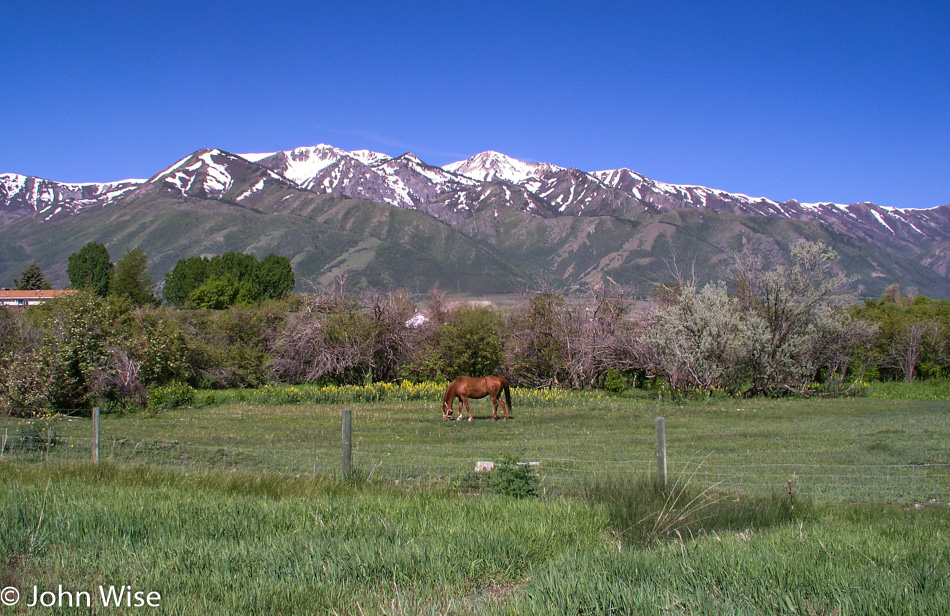
Here we are on the second day of our cross-country road trip, awake and heading up the road by 6:00 am. Interstate 70 runs along a quiet, sparsely populated area out of Richfield before delivering us to State Road 28, which leads us to the main north-south Interstate Highway 15, the only major freeway planned for this road trip.
The southern end of the Wasatch mountain range on our right still has a light dusting of snow along the uppermost ridgeline. The interstate is moving along too fast, leaving little time for sightseeing while we cruise along at 80mph. We do pull off the road at Layton north of Salt Lake City for a Barnes and Noble. Caroline and I had stopped before, knowing they served Starbucks. Only a short drive north now, and we will leave the freeway heading for State Road 89.
The 89 to Logan slices between more snow-covered mountains. The sides of the road are lusciously green. Back in Arizona, we have already approached 100-degree days, and the land is baked to a dull brown. Looking at these lands transitioning from winter to spring is a delight to the eye. A horse stands in its meadow, and if it wasn’t for our need to complete 675 miles of driving today, I think we would all change places with the horse and hang out in his pasture for a day or two. In Logan, the road officially becomes the Logan Canyon Scenic Byway, hence the reason we are traveling here today.
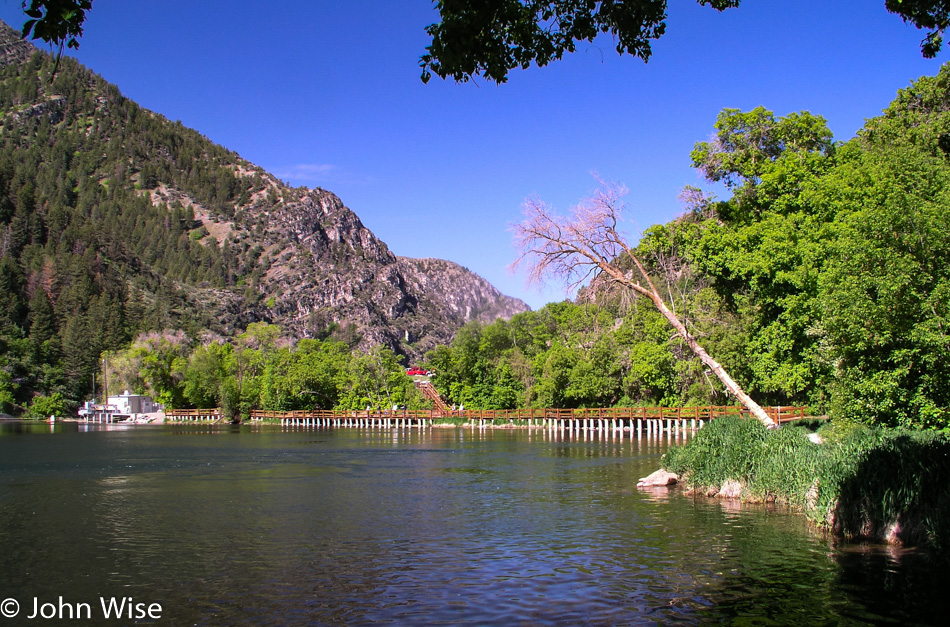
Our next stop is at the Upper Dam on the Logan River. I take a couple of photos and we continue northeast. The greens start to sparkle with effervescence. Small mountainside cascades tumble out of the forest heading toward the road before disappearing below the pavement to join the Logan River we are parallel to. We make a note to return to this particular corner of America in the future. Further on, jagged peaks jut out of low mountains the deeper we get into the canyon. No homes or businesses are to be found within a long sight; it is just us and the grandeur of nature out here.
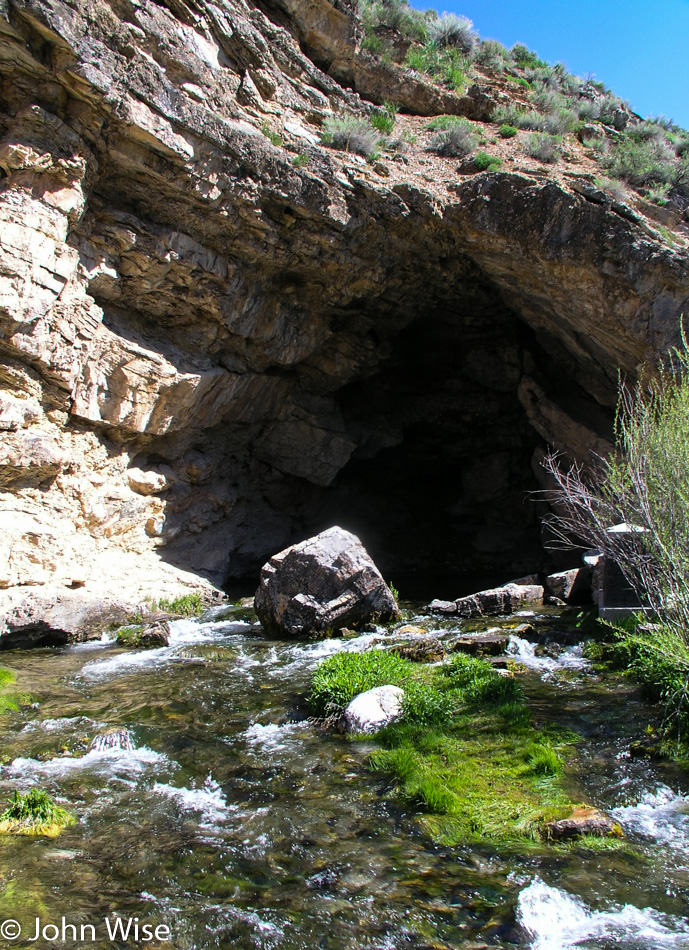
Ricks Spring on the left side of the road flows right out of rock, creating a pool under cover of a small cave carved from the Paleozoic-age carbonate earth. From here, it’s tumbling downhill as a small creek to join the Logan River. This scenic byway, the Wasatch Range, and Salt Lake City are all worthy of vacations in their own right. As the official byway comes to an end and we follow 89 north, the scenic quality of this new segment of road is still as beautiful as the road we came from. Most times, we cannot understand how the scenic designation stops at a particular point.
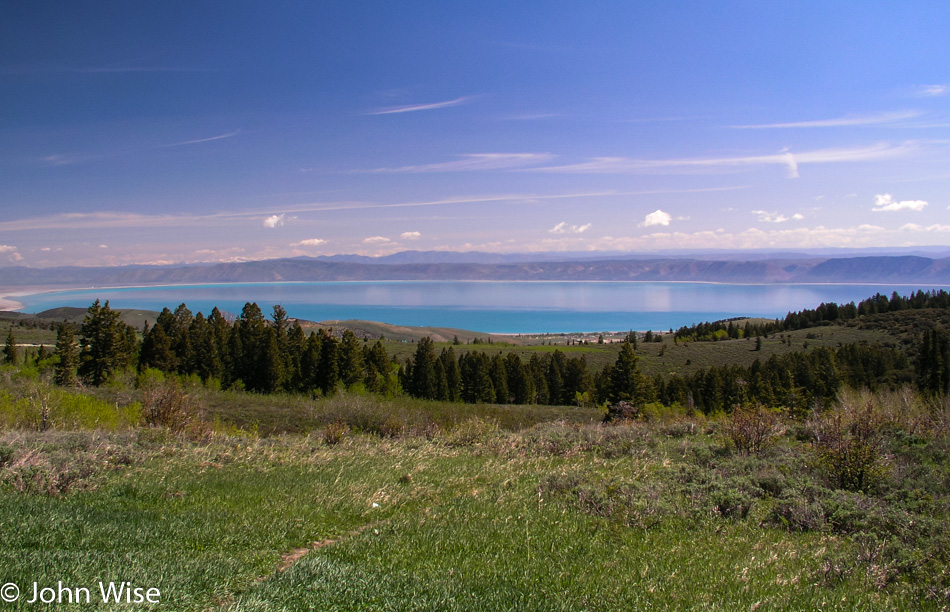
Bear Lake is where we turn left to head into Idaho. The waters of the lake are of a radiant turquoise blue that stretches for 20 miles in length. The original inhabitants of this valley were the Shoshoni and were nowhere to be seen. Maybe on a subsequent visit, we can make an effort to learn more about the history of this corner of Utah.
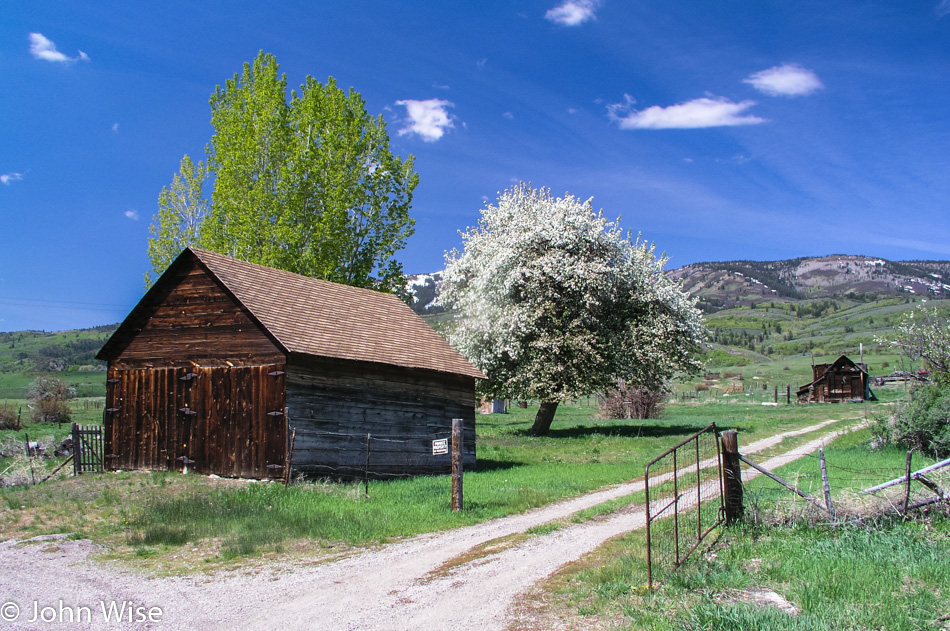
We arrived in Idaho before lunchtime and having finished the Pav Bhaji for breakfast, we were tucking into the Methi Roti with some homemade vegetable pickle Sonal’s mom made for us. A collective yummy sound resonates in the car as our palates and our eyes are delighted.
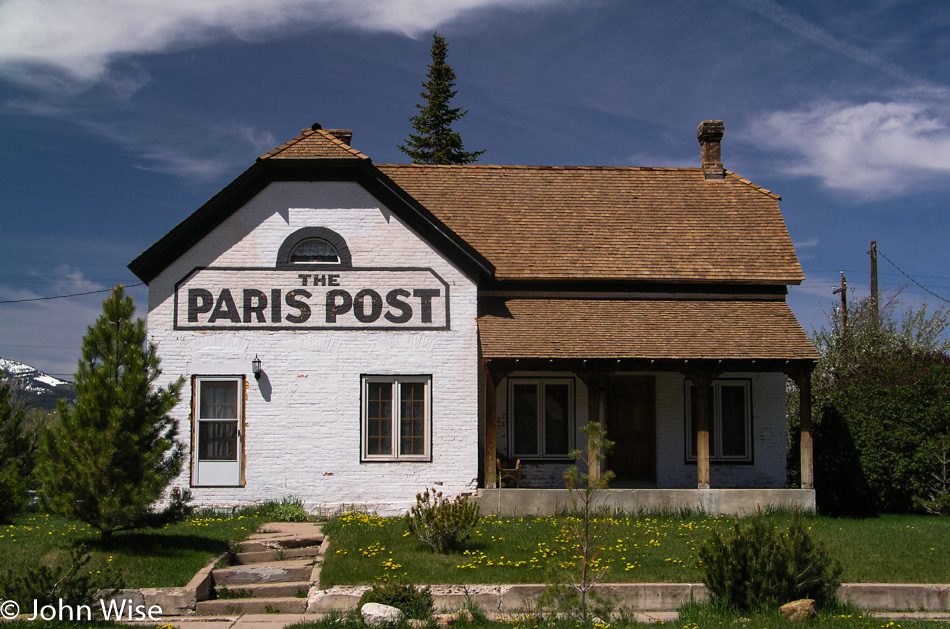
Paris, Idaho, is one of a few small towns along our road before entering Wyoming. Small is almost an exaggeration. The Paris Post newspaper office and the Paris Tabernacle lend great character to the town and make passing through this way a more memorable moment. A mountain in the distance is snow-capped, the land around us stretches with mountains as far as the eye can see, and the day is as beautiful as anyone might ask for.
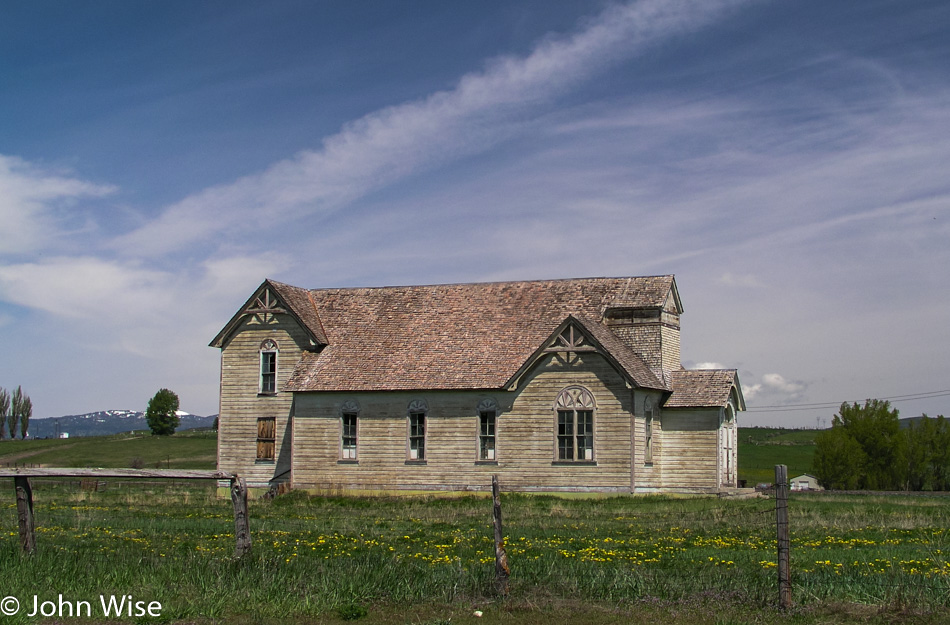
The Ovid Schoolhouse, or what we think is the schoolhouse, is the last notable building in Idaho on our road before entering Wyoming. On the few visits Caroline and I have made into Idaho we have never been less than impressed with the beauty of this land. It is unfortunate that the business and lifestyle demands of modern American society don’t treasure these locations, which contributes to their fading away.
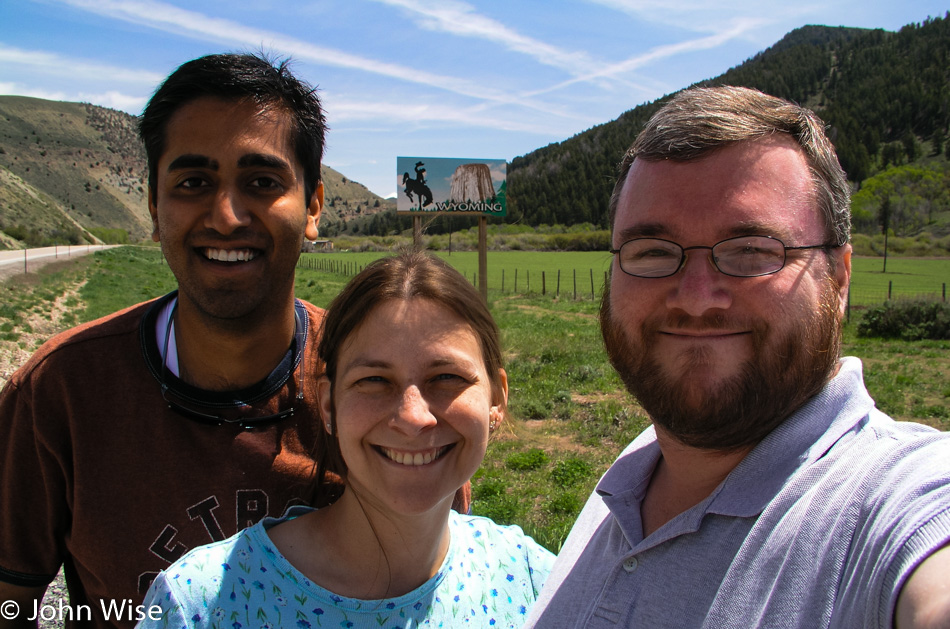
It is only 1:00 pm when we enter Wyoming; we are making great time. A turnoff catches my eye shortly after catching our first sight of the Snake River. It smells kinda funny, but that doesn’t stop Jay and Caroline from taking off their shoes and stepping into the wild river.
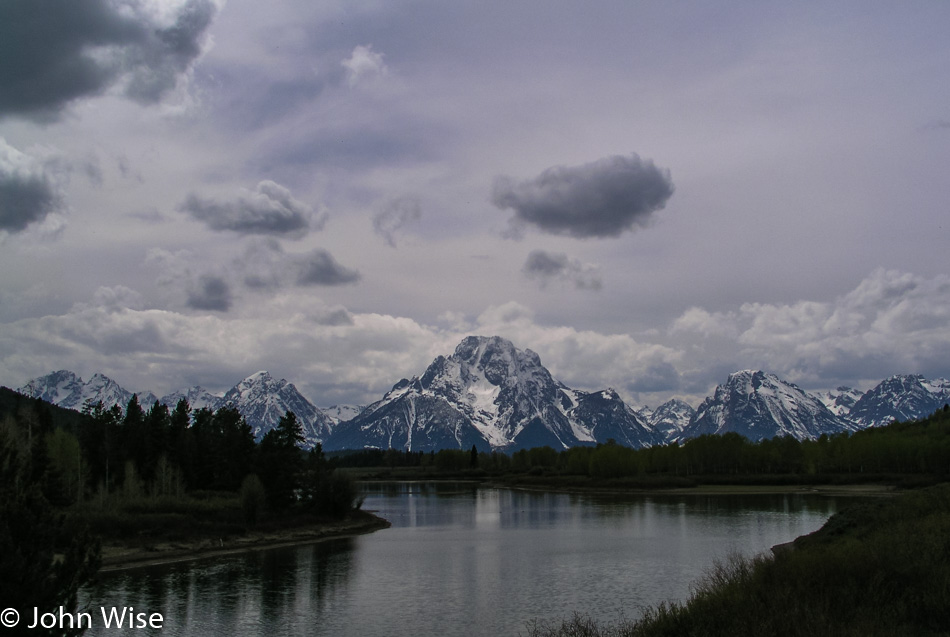
We were going to hang out in Jackson Hole, but the weather wasn’t all that impressive for walking around, so we got right to business and drove a bit further on to get our first glimpse of the Teton range. While this is Caroline’s and my third visit to this stunning corner of Wyoming, it is Jay’s first. We have come to the Oxbow, as for whatever reason, this is Caroline’s favorite spot here in the Grand Teton National Park.
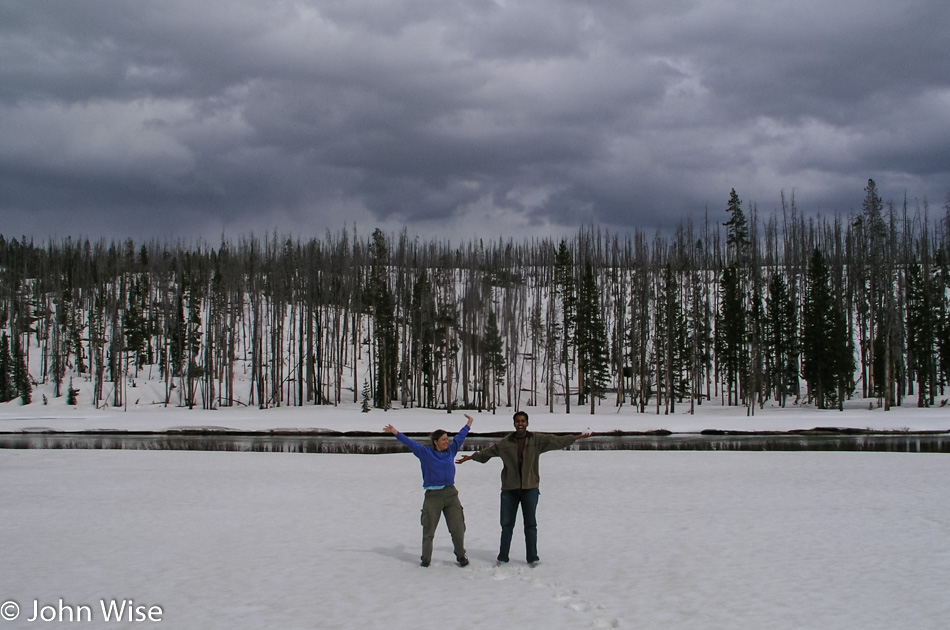
Dad needed to pull over the car so the kids could get out and play in the snow. Look at Jay’s left hand; he’s about to throw that snowball at my wife, but she can defend herself, so it’s all worth the laugh. By the way, the reason we are up here in Yellowstone is we have daylight today until shortly before 9:00, and the weather down south wasn’t conducive to a hike, so we took our chances that maybe things might clear up by the time we arrived at West Thumb.
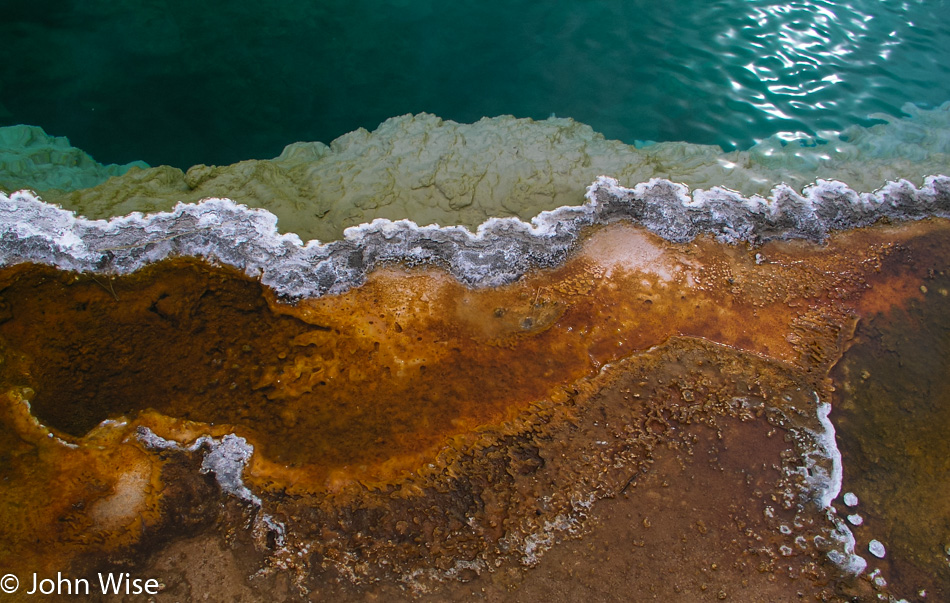
The colors may have changed their hue; the cyanobacteria might have darkened or, in some cases, have dried up altogether leaving a white dusty bed. One type of bacteria could be replaced by another type of bacteria, the new one more foreign than the one it replaced. Mud holes are either thicker and muddier, waterier, or are now a hissing dry depression of escaping steam. Although the specularity of the springs is not as vivid as witnessed under a blue sky and beating sun, they impress us here on this cloudy day with a quiet mystery; a sort of spooky silence that the rising steam lends drama to. For a moment, the sun peaks through but is quickly obscured again by the shifting sky.
As we go to leave West Thumb an elk has raised its head in our direction and taunts us by sticking its tongue out, strange. The next elk wasn’t so much humorous, it was downright pissed off. After a pause so as not to startle the large animal, we began to move forward, but this elk had nothing to do with such a dumb idea. It hissed an angry, “I’ll smash your head with my mighty hoof,” kind of sound that strikes the fear of God into us. Being relatively naïve regarding elk behavior, I doubt what I witnessed to be real and make a second approach. The elk reciprocates with a step forward, another louder hiss, and an amount of spittle that says, “ok, now I’m spitting mad; how far do you want to take this?”
Well, that was enough for us; we slowly backed up and turned around on the boardwalk to take an alternate route to the car, hoping the elk wouldn’t feel like following us. We came up around its backside to watch a couple trying to pass as we had tried just minutes before. They got hissed at one time before the overly confident guy took one step too many, and that elk bolted after him. A sort of hysterical laughter came over us as this guy caught up with his more level-headed female friend, who chose to beat feet as the elk hadn’t quite stopped its charge.
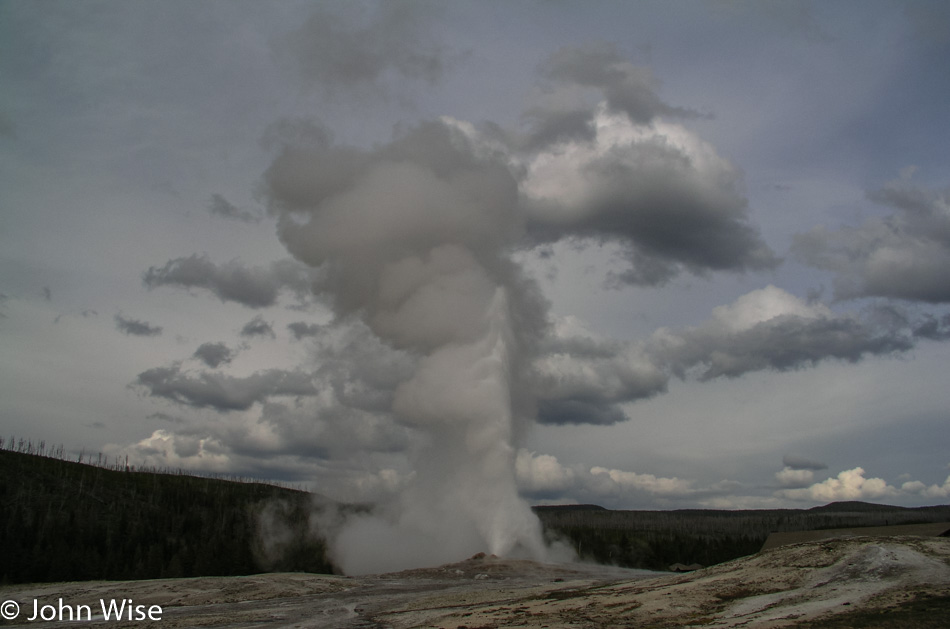
Old Faithful Inn is 100 years old this year, and it is where we’ll be staying tomorrow. We stopped in to try to sway which room number we were assigned. Caroline and I have stayed in room 225 on two previous visits and have taken a particular liking to the room. The room itself is simple and rustic: no bathroom, only a small sink, and poor lighting, but it makes up for its shortcomings with great recognition ability. If ever we are watching a documentary or a news blurb about Yellowstone, it is inevitable that an image of the Old Faithful Inn will be shown. Above the center of the entryway, just over the upstairs patio, are five awnings, with the center one belonging to room 225 where we have stayed many a night. I wait in line to make my request in person, just as I had over the phone on two calls prior to our arrival; I plead for room 225. With this evening’s crew about to make room allotments, luck might be with us.
We step outside with only 10 minutes till the next eruption of Old Faithful. The park is great this time of year, even in poor weather. There are not a lot of people traveling through the park yet. The Inn may be sold out, but the surrounding hotels are still empty, the parking lots nearly empty, and in some cases, we are the only visitors to some sights. Tour buses haven’t shown up yet, school is still in session, and the motor homes are at bay. With room for hundreds of spectators, we approach the Old Faithful area, part of a group of less than 75 who will be watching for Old Faithful to so faithfully erupt one more time.
Seems like we waited twenty minutes, but so what, that is the science of calculating the eruption cycle of this most popular geyser on Planet Earth. The wait is worth it as a trickle of steam gives way to the rumbling thrust of water, adding more clouds to the cloud-filled sky. We watch and listen; Jay is especially taken by the sound of it; he had been certain that the sound he’d heard from a documentary on Yellowstone was a sound effect; to his great surprise, he learns that the earth does rumble when Old Faithful delivers another performance.
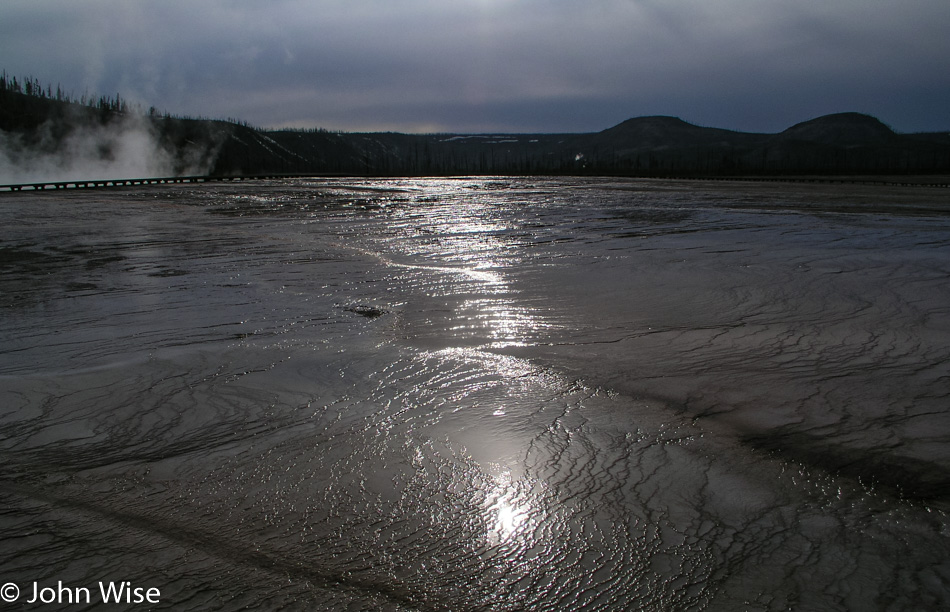
With relatively good weather on our side, we leave Old Faithful and the Upper Geyser Basin for Midway Geyser Basin and the Grand Prismatic Spring. This is the largest hot spring in the park and today is the hardest to see. On the way to this largest of springs, we pass the Excelsior Geyser, which on this day doesn’t have the billowing steam that has obscured so much of it from view as on previous visits. On the other hand, there is so much steam rising from Grand Prismatic that it’s too difficult to even glimpse a hint of its rainbow splash of vibrancy on the ground. What is amazing, though, is that we can see the colors of these springs reflecting in the steam rising overhead.
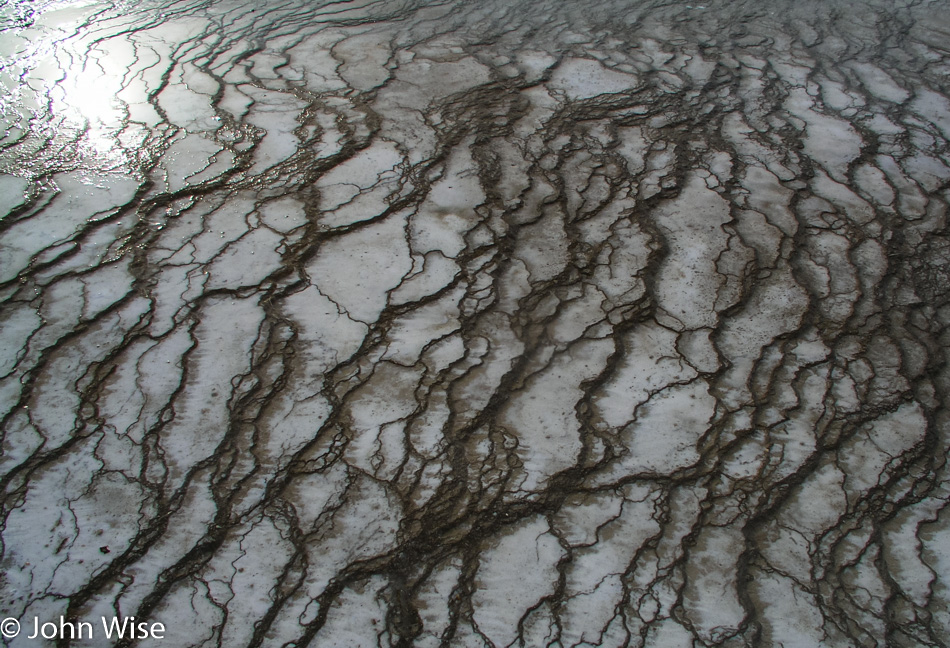
The boardwalks here at Midway offer some of the best views of the calcified minerals that lay down terraces filled with streaming waters escaping from a geyser. The bacteria beds living on these terraces are brightly colored and vividly contrast with adjoining bacteria beds. Different times of the year, different water flow amounts, and water and air temperatures all affect the appearance of these springs and geysers. What you see this spring may not look the same or even similar come fall.
Some of the beds along this boardwalk appear like tissues of sinew and connected flesh stained by the rich mineralized water, while others are membrane-like which gives emphasis to Yellowstone as being something alive and amorphous. Another corner of Grand Prismatic Spring shows a snaking line of fire-red bacteria buttressing a chocolate brown bed to our left. A final look back at Grand Prismatic, and we see the trees on the distant hill reflecting in the waters leaving the spring, the rising steam capturing the rainbow of orange, green, and blue in its misty mirror of fog. Again, we are amazed by the sights of Yellowstone, where just hours before, I worried that the beauty of the park would be hidden in these less-than-ideal weather conditions. It turns out to be an unwarranted concern, the park is as beautiful as it always is.
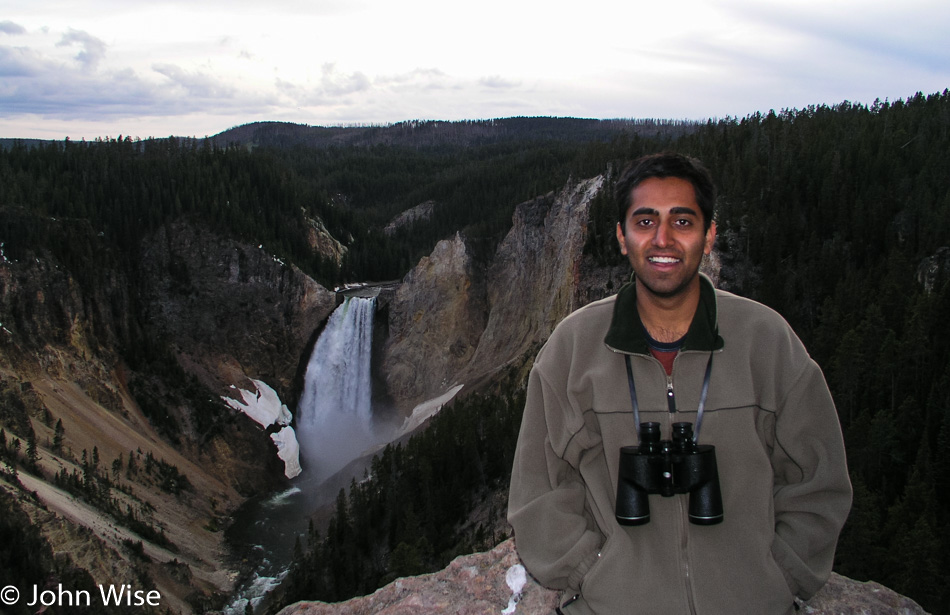
It’s 8:00 p.m. as we arrive at Lookout Point for our first view of the Yellowstone Falls. Remnants of ice cling to the canyon walls, giving a brief glimpse of the wintery majesty the falls create, its waters turning into a 308-foot ice sculpture. Here in spring, alone on this overlook at sunset, nothing interrupts the roaring sound of the falls slicing through the yellow canyon in our nation’s first national park, and we can simply sit here and enjoy its beauty. Not too long, though, as even with the sun so low in the sky there still may be time enough to descend the trail to the Brink of the Lower Falls.
We scurry, nearly running down the 600-foot descent along switchbacks until we are dumped out along the shore of the Yellowstone and the short walk leading to the overlook. Literally, every footstep we take increases the volume of the falls until we are directly at the edge where the water spills over the precipice, and the thunder of the crashing water is deafening. Looking into the canyon, no sunlight, gray overcast sky, and still the canyon inspires the three of us. Cragged and stained walls watch over the white waters of the Yellowstone River stretching out of view. This river, whose headwaters have emerged just southeast of where we stand, leading into and then draining out of Yellowstone Lake, is now on its way to the Missouri River.
The hike back up is demanding, but we are fully satisfied with the day that the climb up could be twice as difficult, and we would hardly care. It is now time for us to make our way back to the Tetons. We take the Lake Village road through Hayden Valley to West Thumb, where we’ll leave Yellowstone via the South Entrance.
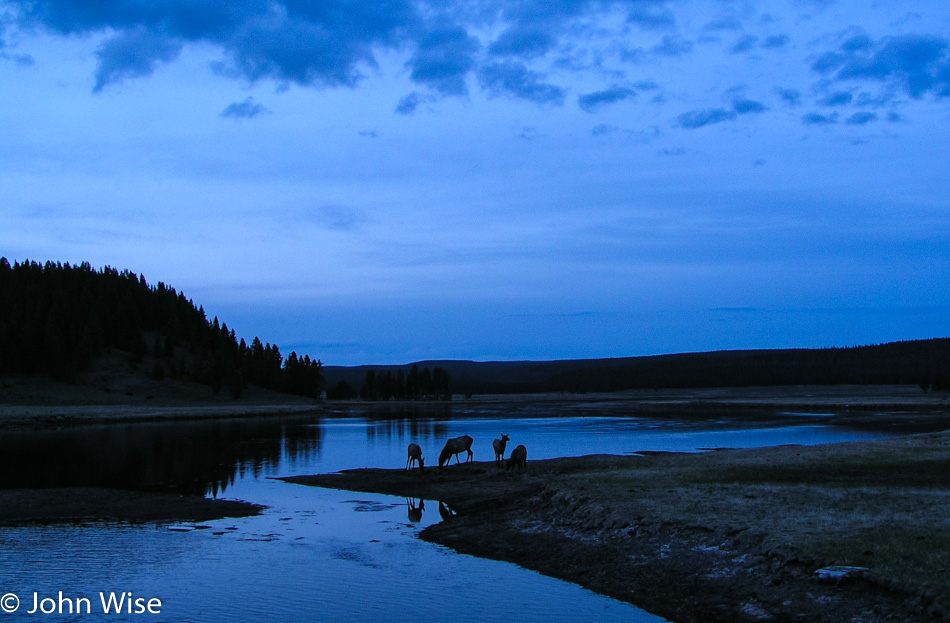
Driving slowly along this more tranquil part of the Yellowstone River we stop for one more photo along the road. A group of elk is standing next to the river’s edge, reflected in the water under the blue dusk of evening. This has been a perfect day. We check into our cabin at Signal Mountain Lodge and are quick to sleep at 11:00 p.m.
